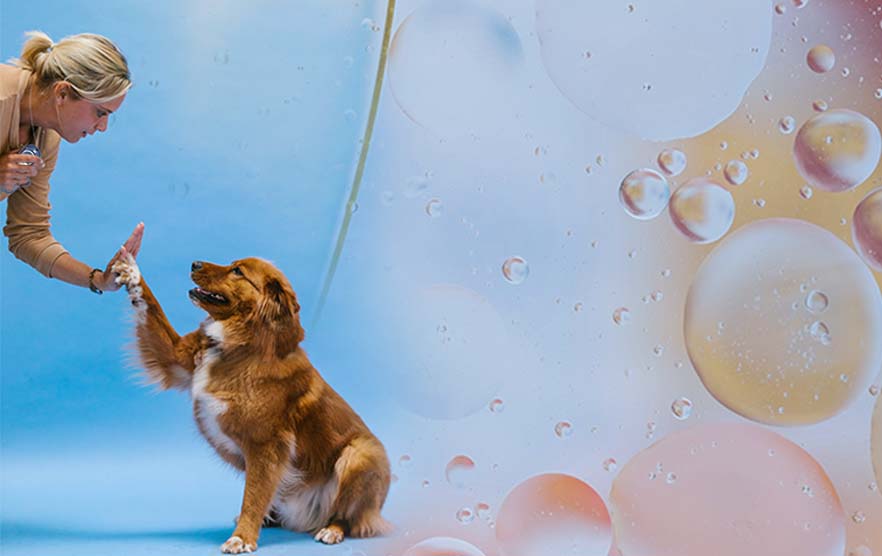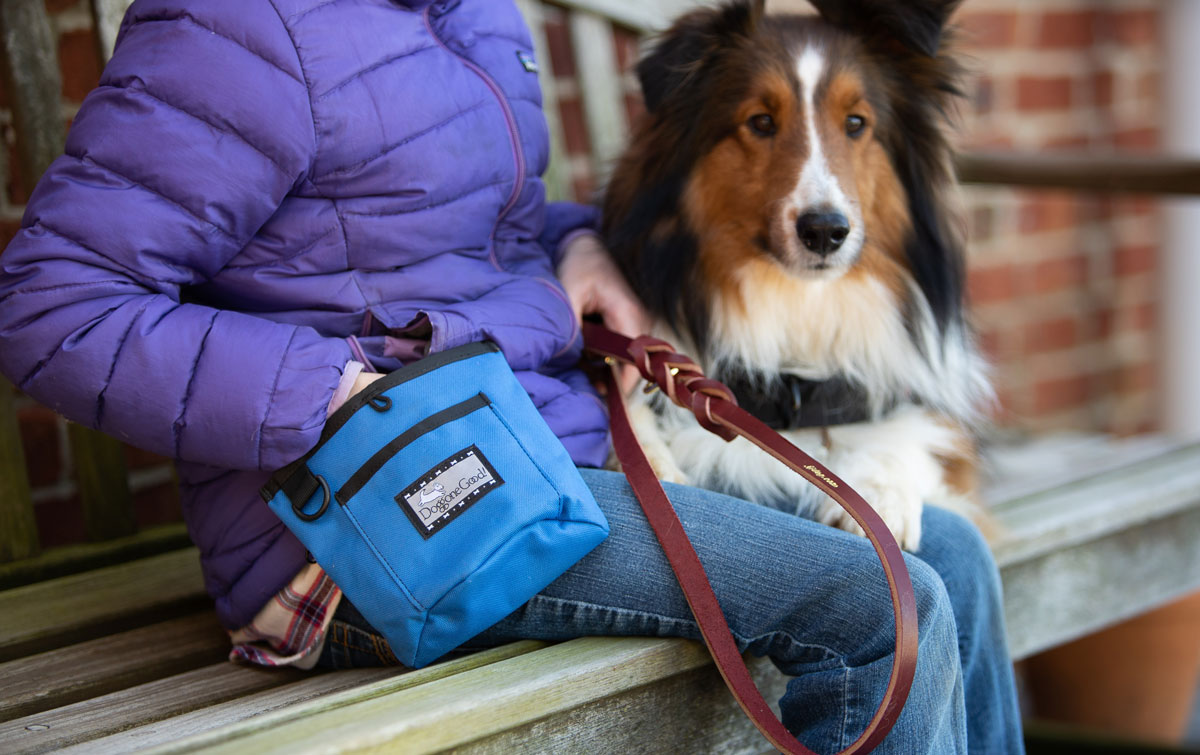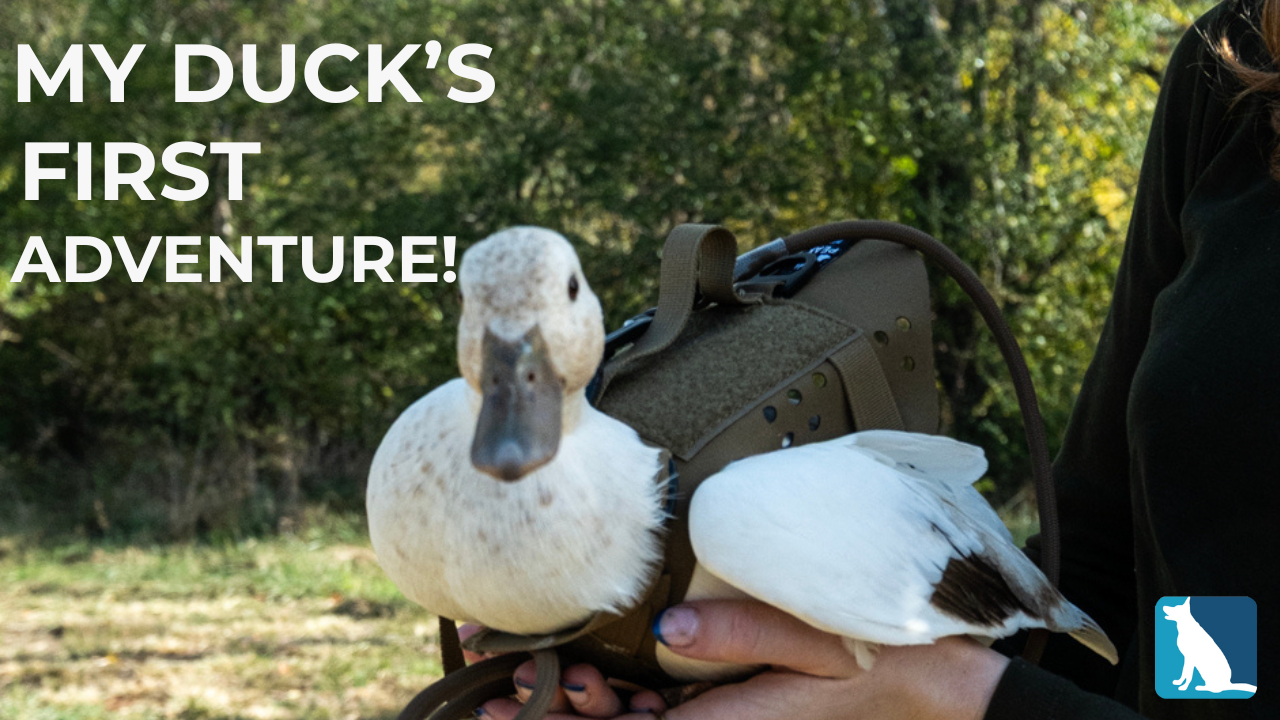Dog Clicker Training: The Science and How to Start
Sep 18th 2024

Dog clicker training is a popular method in canine training, especially among those who participate in dog sports and competitions - like those organized by the American Kennel Club (AKC). It leverages the science of positive reinforcement to create an efficient communication channel between trainers and their dogs, helping achieve faster learning and stronger bonds. This article delves deep into the science behind clicker training, explains why it works, and provides a comprehensive guide on how to get started.
What is Clicker Training?
Dog clicker training is a form of positive reinforcement training that uses a small, handheld device (a clicker) to make a distinct clicking sound. This sound serves as a "marker" to indicate to the dog that they have performed the correct behavior and that a reward (usually a treat) is forthcoming. The clicker serves as a bridge between the behavior and the reward, making the training process more precise and efficient.
Historical Background: Origins in Marine Mammal Training
Interestingly enough, the origins of clicker training can be traced back to marine mammal trainers in the 1960s. They used whistles instead of clickers since these sounds could be heard underwater. The behavioral science principles behind clicker training have proven just as effective for dogs, leading to its widespread adoption in canine training.
The Science Behind Clicker Training
At its core, clicker training is based on the principles of operant conditioning, a concept in behavioral science.
Operant conditioning involves reinforcing a behavior to increase the likelihood of it being repeated.
The clicker acts as a conditioned reinforcer. In other words, it’s a signal that the dog has done something right and will soon receive a reward.
Operant conditioning studies have shown that reinforced behaviors tend to be repeated, while those that are not reinforced tend to fade away. Clicker training leverages this principle by providing a clear, consistent marker (the click) that immediately follows the desired behavior, bridging the gap between the action and the reward.
How Positive Reinforcement Works
Positive reinforcement involves rewarding a dog for performing a behavior that the trainer wants to encourage. The reward, such as a treat or a toy, makes the behavior more likely to occur again in the future. Dog clicker training uses the clicker as an immediate, precise marker for the correct behavior, making the reinforcement process more efficient.
Dog Clicker Training Guide
If you're new to this, here's a step-by-step dog clicker training guide guide to help you get started:
Step 1: Dog Clicker Training Tool - Associating the Click with a Reward
The first step in clicker training is to "load" the clicker - which is your primary dog clicker training tool. You’ll be teaching your dog that the sound of the clicker is always followed by a reward. To do this, find a quiet place with no distractions. Press the clicker, and immediately give your dog a treat. Repeat this process 10-20 times per session until your dog understands that the click means a treat is coming.
Step 2: Marking the Desired Behavior
Once the clicker is loaded, use it to "mark" the desired behavior. This means clicking the moment your dog performs the behavior you want to encourage, like sitting or lying down. Timing is crucial - click at the exact moment the dog does the correct action to ensure they understand what is being reinforced.
Step 3: Using Clicker Training for Basic Commands
Begin with basic commands such as sit, stay, or come. Use the clicker to mark each correct behavior and follow it with a reward. Keep sessions short and fun, around 10-15 minutes, to maintain your dog's interest and prevent burnout.
Step 4: Progressing to Advanced Behaviors
As your dog becomes more familiar with the clicker, you can start using it to train more complex behaviors or tricks. Break these down into smaller steps and use the clicker to mark each successful step towards the desired behavior - a technique known as "shaping".
Common Methods in Clicker Training
Several methods are commonly used in clicker training:
- Capturing Behaviors: Watching for natural behaviors (like sitting or lying down) and rewarding them as they occur.
- Shaping Behaviors: Breaking down a complex behavior into smaller steps and rewarding each step towards the final goal.
- Luring Techniques: Using treats or toys to guide the dog into performing the desired behavior.
Benefits of Clicker Training
Whether you’re using dog clicker training for barking or something else, this method accelerates learning by providing dogs with immediate feedback, which helps them quickly associate commands with the correct behaviors. The precision of the clicker also enhances communication between the dog and the trainer, as the dog can easily understand which specific behavior is being rewarded. This clear and consistent interaction creates a strong, efficient language between the dog and the trainer, strengthening their bond and improving overall training outcomes. As a result, both learning and the relationship between the dog and trainer benefit significantly from the use of this method.
Common Mistakes to Avoid in Clicker Training
While clicker training is effective, it requires proper technique. Here are common mistakes to avoid:
- Clicking Too Late or Early: The timing of the click is crucial; it should happen exactly when the desired behavior is performed/
- Overusing the Clicker: Using the clicker too frequently or without rewarding can diminish its effectiveness.
- Failing to Reward Consistently: Always follow the click with a reward to maintain its association with positive reinforcement.
When Clicker Training May Not Be Suitable
While clicker training is effective for many dogs, there are certain situations where it may not be the best option. For instance, dogs that are sensitive to sound might become frightened by the clicking noise. In these cases, using a verbal marker or a visual cue can be a better alternative. Additionally, for dogs dealing with fear or anxiety, clicker training might not be the ideal approach. It’s important to consult with a professional trainer to find the most appropriate method for addressing anxiety-related behaviors.
Clicker Training for Different Dog Sports
Clicker training can be highly effective for preparing dogs for competitive events:
- Agility: Clicker training helps with precise movements and speed.
- Obedience and Rally: Reinforces specific commands and behaviors under competitive conditions.
- Scent Work and Tracking: Clickers can be used to mark correct scent detection or tracking behaviors.
Give Clicker Training a Try
Clicker training offers numerous long-term benefits for both dogs and their trainers. It helps build a trusting and respectful relationship by creating a clear line of communication, allowing dogs to understand exactly what behavior is expected of them. This method also provides mental stimulation and enrichment, keeping dogs engaged and mentally active. Moreover, clicker training fosters lifelong learning, encouraging dogs to continue adapting and developing new skills as they grow. By making training a positive and enriching experience, both dog and owner can enjoy a more fulfilling bond.
For those involved in dog sports or competitions, clicker training offers a distinct competitive edge. It enhances precision, focus, and communication, all of which are critical for success in events. The science-backed method ensures efficient learning, making it suitable for training everything from basic obedience to advanced behaviors. Whether you’re training a puppy or preparing an experienced dog for competition, clicker training is a practical and rewarding approach that can benefit any dog-owner partnership. Give it a try and see the positive changes it brings to your training routine!





